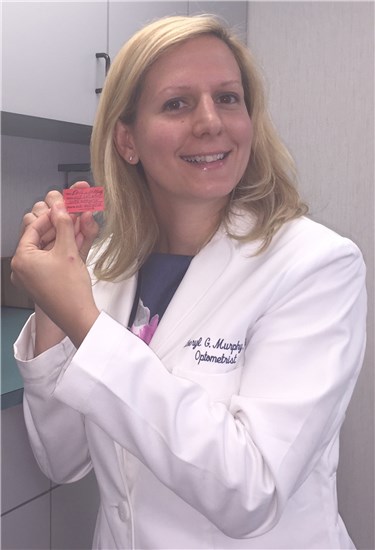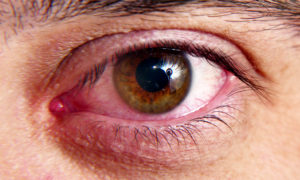By Cheryl G. Murphy, OD

July 22, 2015
Wearing a white coat allows patients to easily identify the doctor in a practice, and, traditionally, it has lent an air of credibility and professionalism to the physicians who wore one. However, recent studies have shown white coats can be prone to contamination, and may inciteWhite coat hypertension, so is wearing one right for you and your practice?
The History Behind the Coat
Doctors first started wearing lab coats in the nineteenth century after scientists had proven many of the “cures” used by physicians at the time were ineffective and useless. The public distrusted doctors, viewing their once-valued treatments as quackery. To combat the backlash that physicians were receiving from patients, they chose to wear lab coats similar to those of the scientists to show they were aligned with scientists, and were beginning to practice more evidence-based medicine.
Before that, in the early nineteenth century, people who worked in hospitals usually wore black clothes or robes. Their black attire represented the somber mourning for the soon-to-be deceased since most people who were staying there while receiving long-term hospital care were dying. Ultimately, advances in science-based medicine began to change the way people thought of hospitals, and instead of being viewed as places of inevitable death, they started to be seen as places of hope.
How to Launder Your White Coat
Experts say that industrial laundering isn’t any better at decontaminating than home laundering, so it is OK for optometrists who practice in a non-surgical setting to wash their white lab coats at home. To do so, a hot-water wash cycle (with bleach) should be used and then the coat should be tumbled dry or ironed.
The second step of drying with heat is essential since the coat may pick up other forms of bacteria in the wash cycle. This hot-water wash with bleach and then dry cycle is effective at eliminating gram positive and gram negative bacteria, and it should be done at least weekly. —Cheryl G. Murphy, OD
Why White?
Believe it or not, the color of the lab coat wasn’t always white. Scientists in the nineteenth century wore beige lab coats, and it was physicians who changed the color from beige to white in order to resemble the white cowboy hats of “good guys” and the holy attire of saints. White portrayed a sense of purity, honorable intention and compassion, as well as cleanliness. The earliest photographic proof of doctors wearing white lab coats is from 1889, and it shows doctors at Massachusetts General Hospital wearing white coats over their street clothes while performing surgery.
Today many medical schools have “white coat ceremonies” in which a young doctor is awarded the right to don the white coat. Scholars at these schools say that the white coat should serve as a reminder to physicians of their Hippocratic oath and that “above all else, [they should] do no harm.”
So, it is interesting that the white coat itself may be doing more harm than good to patients.
Cons of the Coat
Although “no studies have directly linked health care workers’ apparel to hospital-acquired infections…plenty have found that white coats, uniforms and ties are often colonized with harmful pathogens,” such as staphylococcus aureus, methicillin-resistant staphylococcus aureus and vancomycin-resistant enterococci. The Society for Healthcare Epidemiology of America (SHEA) suggests that if physicians choose to wear white lab coats they should be laundered daily and taken off and hung up in the exam room before each patient encounter begins.

Dr. Murphy in her white doctor’s coat, showing off the winning ticket to a raffle for a new pair of sunglasses, a contest the practice where she works recently held. Dr. Murphy says that while white coats can connote professionalism, they also can be intimidating to some patients.
In the United Kingdom, the Nation Health Service banned long-sleeved white lab coats in 2008 and adopted a voluntary “bare below the elbows” (BBE) policy (which entails all doctors wearing short sleeves, no wrist watch and no jewelry.) The BBE policy has met with some criticism due to the lack of evidence that a contaminated lab coat, or any of these items, could spread disease. However, some think wearing jewelry or a watch would make doctors less likely to comply with proper hand hygiene. They add that long sleeves, cuffs, neckties and scarfs are all potential harbors to which infectious pathogens could anchor.
In addition to the white coat being a possible collector of contaminants, it has also been given a bad rap for being associated with a condition called white coat hypertension.
“White coat hypertension was first discovered by Riva-Rocci in 1896, who described this phenomenon as in increase in blood pressure experienced only during a physician’s visit.” It turns out the temporarily elevated blood pressure and heart rate is sparked by the anxiety some patients feel when in the presence of a doctor, and it is not necessarily due solely to the visual cue of the white lab coat itself. Spending an appropriate amount of time with a patient so that they don’t feel rushed, demonstrating empathy for them, answering their questions and practicing good patient-doctor communication can help to quell this anxiety and establish trust.
As optometrists, should white lab coats be chosen over professional attire that could perhaps be more easily laundered daily? Since there is a slight chance that it could cause anxiety in some, and possibly spread infection in others, is it worth it for us to wear them, or is it time for us to hang them up for good?
I started wearing one for the first time in 11 years at the request of my new employer. Although I do like its convenient, large pockets, I have not yet decided whether or not I prefer wearing it to my normal, professional attire. I will tell you this: After reading all of the studies while preparing to write this article, one thing is for certain–I will definitely be washing it more often.
How do you side on the lab coat debate? Has wearing lab coats been beneficial to you and your staff? How often do you launder your lab coats, and with what method? Will your laundering or wearing habits change after reading this?
Cheryl G. Murphy, OD, practices in Babylon, N.Y. You can like her on Facebook or follow her on Twitter @murphyod. To contact her: murphyc2020@gmail.com.

























